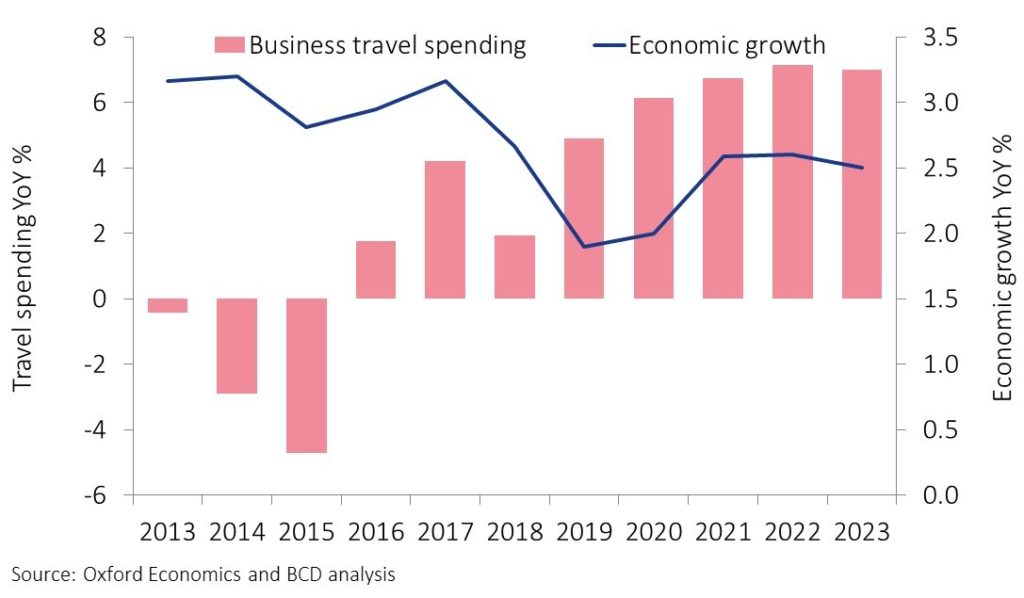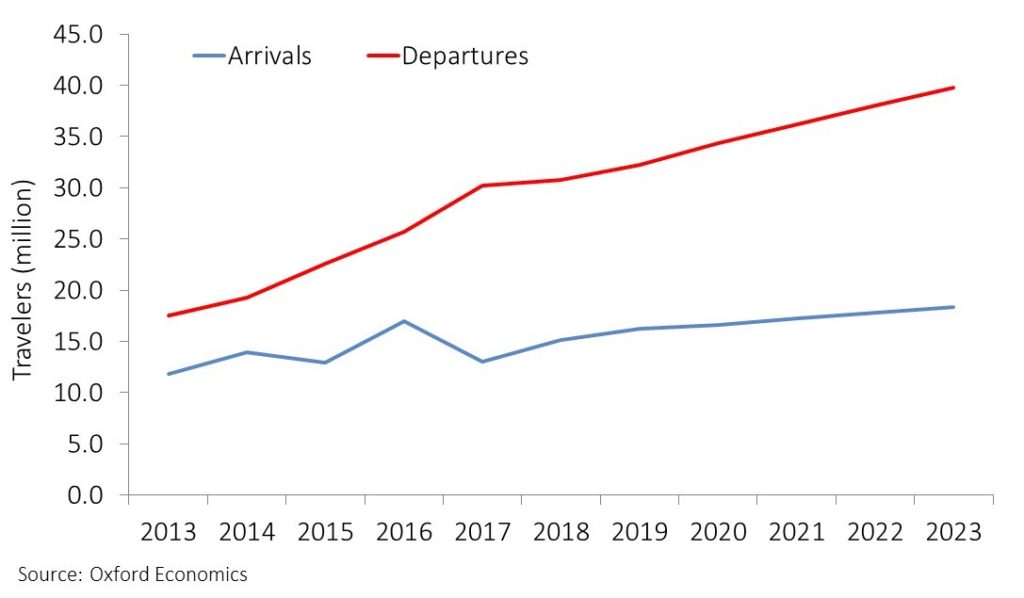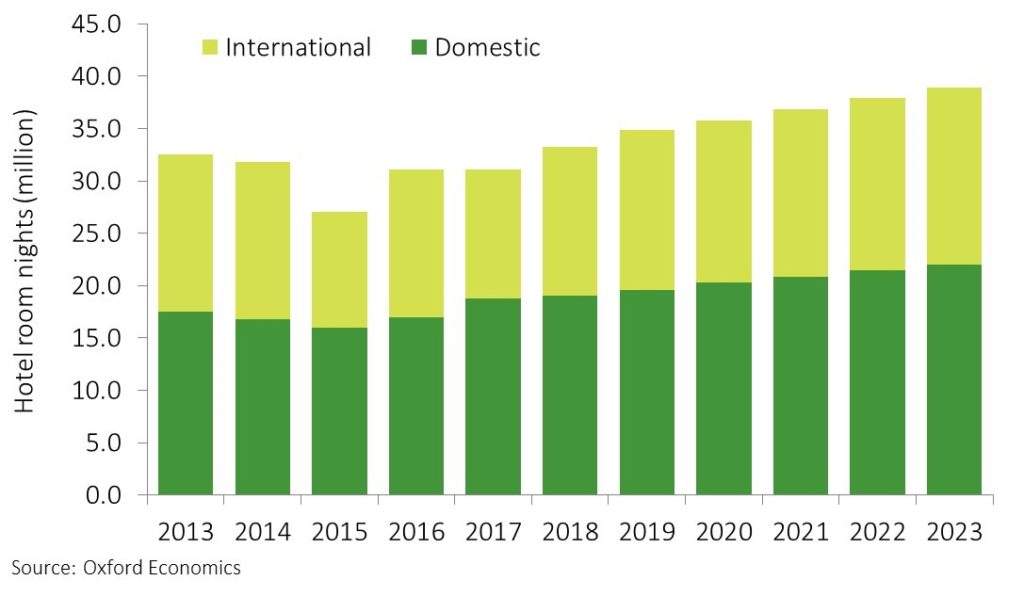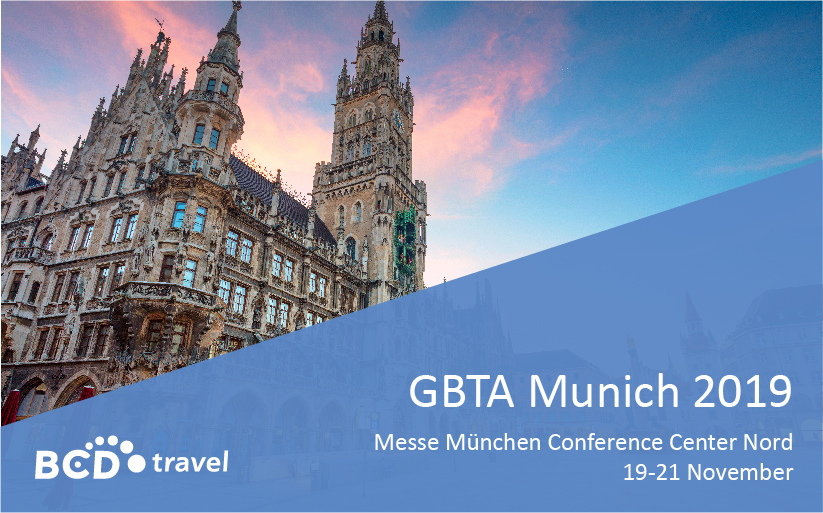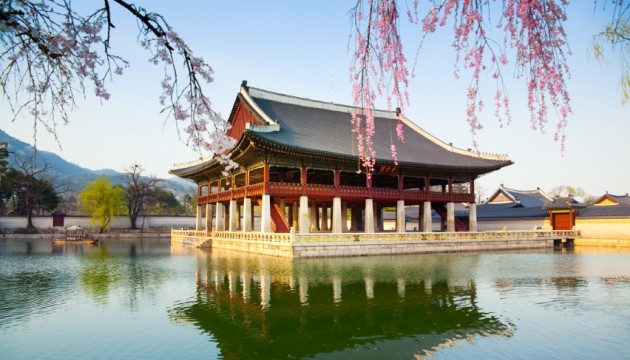
Trade uncertainty weighs on the world’s 12th-largest economy, but travel spending is still strong.
Corporate travelers spent almost US$15 billion on trips to, from and within South Korea in 2018. Domestic travel accounted for 39% of this figure. Outbound trips represented 32%. Between 2013 and 2018, there was no average annual growth in business travel spending. While domestic spending expanded by 8.3% per year, spending on international trips declined. Through 2023, spending is forecast to expand by 6.4% per year. Travel to South Korea will see the strongest growth of 7.8%. Spending on outbound travel will average 6.1%, with 5.4% growth expected for domestic trips.
Gain insights on markets around the world with BCD Travel’s 2020 Industry Forecast.
Economic environment
Economic growth and business travel spending
Click on image to enlarge
- With a gross domestic product (GDP) worth more than US$1.6 trillion, South Korea has the world’s 12th-largest economy. It is also the fourth-largest Asian economy behind China, Japan and India.
- Led by a manufacturing sector focused on exports and supported by the use of the latest manufacturing techniques, South Korea enjoyed rapid economic growth averaging 9% per year between 1980 and 1996.
- Hard hit by the Asian economic and financial crisis of 1997-1998, South Korean companies have since been more cautious about investment. This has put the brakes on economic growth, which averaged just 3% per year in 2011-2015.
- Growth has softened further, dropping to 2.7% in 2018, and is forecast to decline to 1.9% this year.
- Trade uncertainty is weighing on the near-term outlook. South Korean exporters are vulnerable to China’s economic slowdown and the fallout from its trade dispute with the U.S. South Korea also has the impact of its own trade dispute with Japan to deal with.
- The Bank of Korea has cut interest rates to limit some of the damage to economic growth. The government has also promised to increase spending in 2020, supporting employment and domestic demand. But South Korea still faces two years of weak growth.
Air
International travel
Click on image to enlarge
- South Korea is firmly an outbound travel market, with departing travelers accounting for more than two-thirds of all journeys.
- Between 2013 and 2018, outbound travel expanded by 12% per year; arrivals grew more slowly at 5%.
- Inbound travel has fluctuated in recent years, as arrivals from China and Japan have seen both sharp year-over-year increases and decreases.
- Since 2008, the number of local scheduled airlines has increased from three to eight. Another three airlines are in the pipeline.
- Korean Air and Asiana are the market leaders, but they face a growing threat from rapidly expanding low-cost carriers (LCC) Jeju Air, T’way Air and Eastar Jet. To compete, they have started their own LCCs: Asiana has launched Air Seoul and Air Busan, while Korean Air owns Jin Air.
- Korean Air is the largest airline at Seoul’s two airports – Incheon and Gimpo – and in Jeju and Cheongju. Asiana is the leading airline in Busan, Daegu and Gwangju.
- While LCC competition has so far been confined to regional routes, startup Air Premia plans to bring low-cost competition to mid- and long-haul markets including North America.
Accommodation
Hotel demand
Click on image to enlarge
- Between 2013 and 2018, international demand for hotel accommodation fell 6%. Even with a 9% increase from domestic travelers, total room nights rose just 2% during this period.
- Sharp falls in Japanese and Chinese visitors in 2015 and 2017 respectively were the main cause of weak international demand.
- The three largest hotel chains in the South Korean market are all global companies: Wyndham, Marriott and Accor.
- Market leader Wyndham offers only midscale accommodation, although its 33 Ramada hotels are located across the country.
- Marriott offers accommodation across 13 brands in the luxury, upper upscale, upscale and upper midscale service tiers, although few of its 27 hotels are located outside Seoul.
- Through a partnership with Ambassador Hotel Group, Accor operates 25 hotels in seven South Korean cities.
- Fourth largest chain LOTTE Hotels is the largest local operator, with 20 hotels across Seoul, Busan, Jeju, Daejeon, Ulsan and Sokcho.
